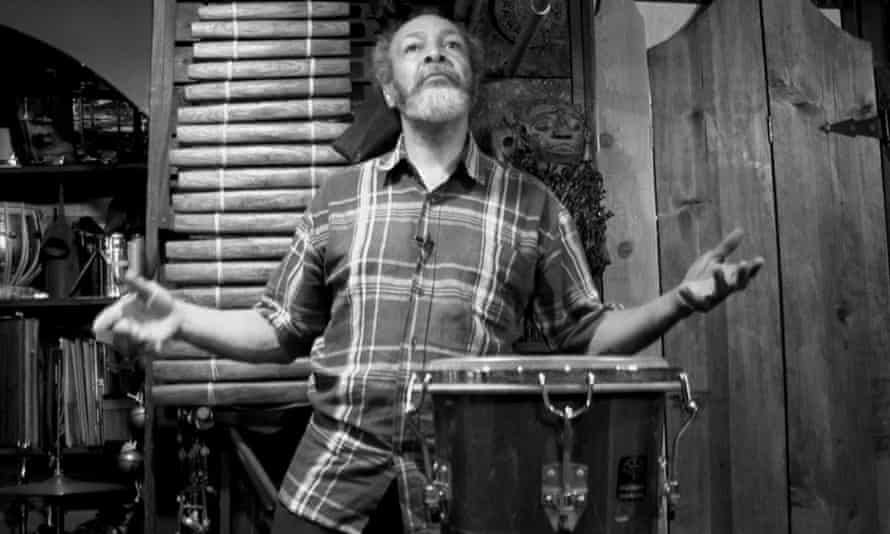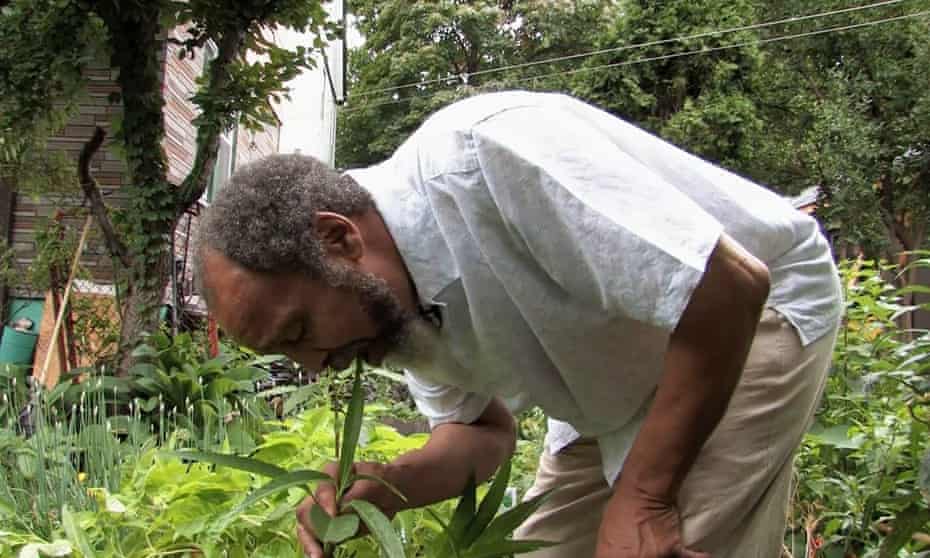“Milford Graves: the pioneering drummer whose naturalistic rhythms freed up jazz

Last modified on Sun 14 Feb 2021 07.35 EST
Of all the freedoms opened up by the free-jazz revolution of the 1960s, none was more radical or, to many, disturbing than the freeing of rhythm from fixed points of bar lines and regular time signatures. The American drummer Milford Graves, who has died aged 79, was in the forefront of that move to create momentum through surges of energy that seemed to reflect the social and political passions driving what became known simply as the new music.
Graves collaborated with many of the movement’s leaders, including the pianist Don Pullen and the saxophonist Albert Ayler, in a long and influential career as a performer. But he was much more than that. In the description of the composer and saxophonist John Zorn, he was its shaman: a student – and eventually teacher – of many disciplines, from linguistics and human biology to martial arts.
Like that of his contemporary Sunny Murray, Graves’s drumming appeared to reject the clarity and technical sophistication, with its origins in military-band rudiments, developed over decades by jazz drummers and brought to a peak in the bebop era by the likes of Max Roach. Sometimes he would use tree branches or other implements instead of regular drumsticks. He threw away the snare that gave the snare drum its crisp sound and detuned his tom-toms, removing the bottom heads (skins) to create a different projection of the sound. Sceptics viewed all this as a reversion to primitivism. In fact, it was another kind of sophistication, reaching for inspiration back into the music’s deepest origins.

“I work for natural sounds rather than trying to sound like drums,” he told Val Wilmer in the 1970s. “Sometimes I try to sound like car motors or the continuous cracking of glass.” Disciples of Buddy Rich were duly scandalised.
Born in the New York borough of Queens in 1941, Graves began by playing conga drums and timbales in Latin groups, some of them featuring a young classically trained pianist named Chick Corea. Facing prejudice against non-Latino players in that environment, Graves refused to do what many others were doing and change his name to something that sounded Hispanic.
Invited by his fellow percussionist Don Alias to take part in a summer school in Boston in 1963, he met the saxophonist Giuseppi Logan and for the first time started using a conventional drum kit. With Logan he began to explore the possibilities offered by non-metred rhythms; back in New York they fell in with a crowd of musicians playing mostly in coffee houses who eventually, under the aegis of the trumpeter Bill Dixon, coalesced into the following year’s October Revolution in Jazz, a festival at the Cellar Café featuring Logan and Graves alongside the groups of the pianists Sun Ra and Paul Bley, the saxophonist John Tchicai and others.
Soon Graves was appearing on the ESP label’s recordings by Logan, Bley and the New York Art Quartet, a highly influential group led by Tchicai and the trombonist Roswell Rudd. In 1966, he and Pullen recorded a duo concert at Yale University and released it on their own label, hand-painting the covers of albums that would become highly prized collectors’ items. The following year he joined the quartet of Albert Ayler; they played at the Newport Jazz festival and, three weeks later, opened John Coltrane’s funeral in St Peter’s Lutheran Church in New York City, an emotional ceremony closed by Ornette Coleman’s quartet.
Graves left Ayler when the saxophonist began to head in a more commercial direction. Thereafter his appearances on record were sporadic, although they included the guitarist Sonny Sharrock’s Black Woman and two albums of solo percussion on Zorn’s Tzadik label.
He life took a different turn in 1973 when, at Dixon’s invitation, he accepted a teaching post in the Black Music department at Bennington College, a liberal arts establishment in Vermont. The students in his first year were almost uniformly white – “they weren’t speaking no ghetto language,” he said – but he would spend the next 39 years there imparting the wisdom collected through his own studies in many fields, in particular, the fluctuations of the human heartbeat, through which he explained his own approach to rhythm. As he told Alan Licht in an interview for The Wire magazine: “All you gotta do is feel your wrist pulse, and start counting, and you’re gonna find yourself at times counting a little faster and a little slower. You’re not gonna have a steady beat. If you do have a steady beat, that’s dangerous. Extremely dangerous.”
In place of that steady beat, Graves discovered rhythms that required a different drummer: one with a knowledge of gardening and herbalism, of algorithms and acupuncture, of painting and sculpture, who studied the neuromuscular properties of Chinese or Yoruba singing as well as Indian drumming; one who collaborated with Lou Reed and the Japanese dancer Min Tanaka, and who created his music in the way he cooked his meals, with ingredients from around the world and the rhythms of the human heart.’
No comments:
Post a Comment